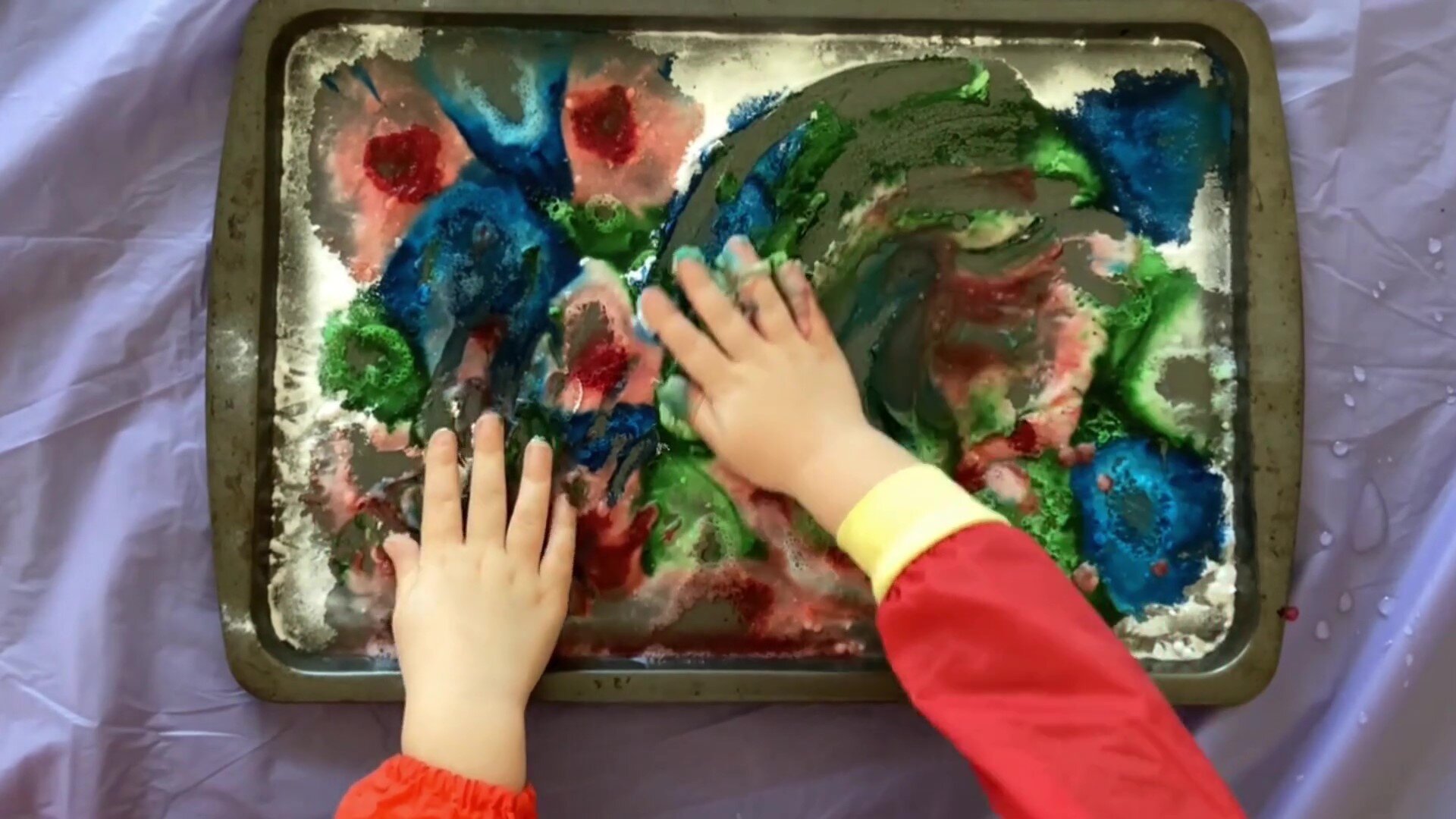Playing with Science - Baking Soda and Vinegar Experiments
Mixing It Up!
If you want your child to develop focus, then try some science experiments that include mixing ingredients to make a reaction. The fizzing or the popping or the blending after combining ingredients is mesmerising! Science evolving in front of your eyes is just something to be watched. For this reason, we have put together a few baking soda and vinegar experiments that would be a great introduction into chemical reactions for the kids. To view these ideas, watch our YouTube video below by clicking on the image.
The experiments we do are very easy. We specifically chose simple ones to encourage kids to do them independently or at least parts of them. A great follow on from these experiments would be setting up a “testing lab” for further exploration. We envisage the lab including a range of ingredients and measuring tools. Imagine experimenting with quantities of different ingredients and predicting what you think will happen and then seeing if you are right. The freedom to explore this way is one of the many ways children learn about the world. So if you are up to it, a session of lab experiments would surely be a great hit with the kids.
We like to use ingredients that are in most pantries for safety reasons. With young children, we would still recommend adult supervision and support. Everything needs to be used safely. By this we mean, for example, that the ingredients are not going to be shoved up the nose or thrown across the kitchen or ingested at great quantities. If there is any chance of this happening, then supervision is a must.
So what do kids really get out of mixing ingredients? Cause and effect for one. Allowing your child to explore different quantities of different ingredients will show the reactions or lack of reactions and there lies the learning. “If I do this, then that will happen.” Giving your child opportunities to do experiments this way shows that ideas can be tried out and tested, and it’s okay if the result is unexpected or disappointing. Encourage your child to try again and again to make it happen. Suggest changing one step at a time until there is a reaction. This is great scientific thinking following steps that scientists actually take! When a child tries different ideas to get the desired effect, perseverance is developed and that is a great learning disposition to develop for all learning. Prediction is another. “I expect this to happen when I do that.” In order to experiment successfully with ingredients, knowledge about quantities is developed and skills are practised such as using a spoon and pouring.
It is important for kids to explore their world and safely experiment with ingredients that you are happy to use. It is also important for kids to try their own combinations and to see the reactions that happen or don’t happen. You can be there to talk about predicting what might happen and what actually happens. You can work out together why the reactions happen. Encourage further experimenting by working alongside your child. Be buddy scientists and share your discoveries.
Kids need to learn about their world. The more they explore and experiment the more knowledge they will gain. Kids who are passionate about science are always excited to make a new hypothesis to try out or the discovery that they have made. You might be surprised to find science experiments scattered around your home and if you do, that is awesome! We should never underestimate the impact that science has on learning. It develops curiosity and when kids explore their wonderings, they connect more deeply with their world.









